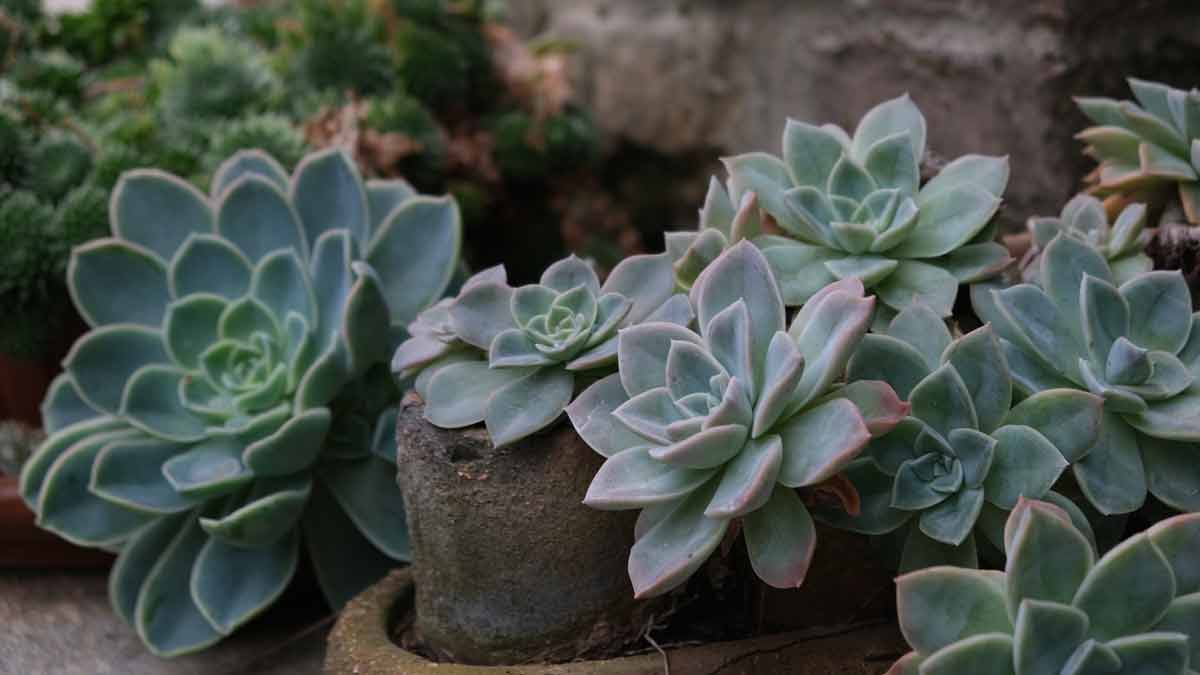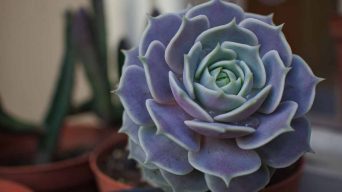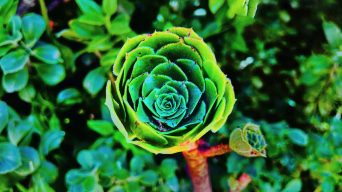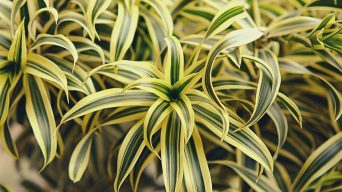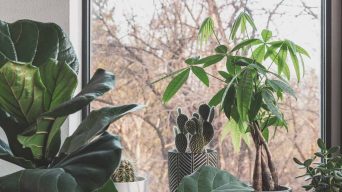Key Takeaways
- Echeveria is a low – maintenance succulent plant that can be grown indoors and outdoors.
- Providing adequate sunlight, well-draining soil, and proper watering techniques is important when growing Echeveria.
- Echeverias are natural air purifiers and can help reduce stress levels when kept indoors.
- Keeping Echeveria outdoors provides access to more sun exposure which helps maintain their vibrant colors while improving the surrounding air quality.
Echeveria is an enchanting and versatile succulent plant that brings life and vibrancy to any space – whether nestled on your windowsill or thriving outdoors in your garden bed.
With their alluring rosettes of plump leaves, these captivating low-maintenance plants are perfect for experienced green thumbs and novice plant owners.
This guide will delve deep into the world of Echeveria, offering invaluable tips and techniques for growing these exquisite beauties indoors and outdoors.
Echeveria: An Overview
Echeveria, a stunning succulent plant native to semi-desert areas of Central and South America, is well-loved for its diverse colors and growth habits.
Pay close attention to the rosette shape formed by its fleshy leaves to identify this captivating houseplant accurately.
Another key identifier is their thick, waxy outer layer that helps them retain moisture in their natural desert habitats.
Observe how these plants grow: they’re known for producing offsets or “pups” around the mother plant’s base – a surefire sign you’ve stumbled upon an authentic Echeveria specimen!
Understanding Echeveria’s Growth Habits
Echeveria plants are known for their slow-growing and drought-tolerant nature, making them an ideal choice for novice and seasoned plant owners.
These succulents typically do not grow larger than one foot in height or diameter, ensuring they remain manageable for most indoor and outdoor spaces.
Echeverias have a unique growth habit in which they produce offsets around the edges of the main plant.
One fascinating aspect of Echeveria’s growth habits is its ability to create new plants through various propagation methods such as seeds, offsets (also known as “pups”), or individual leaves.
One way to propagate a succulent plant is by carefully removing a healthy leaf from the main plant and placing it onto a soil mix that allows proper drainage.
The leaf will grow roots with time and develop into a new plant.
This propagation method demonstrates the plant’s hardiness, common among other succulent species found in Central America’s semi-desert regions.
Choosing Indoor Or Outdoor Growing
Deciding whether to grow your Echeveria indoors or outdoors largely depends on the specific needs of the plant and your environmental conditions.
As a versatile and adaptable succulent, Echeverias can thrive indoors and outdoors.
For example, growing your Echeveria outdoors may be an excellent option if you live in a mild climate where temperatures do not drop below freezing during winter months or rise above 95°F (35°C) in summer.
Outdoor growth allows these plants to receive plenty of direct sunlight and enjoy proper air circulation vital for their development.
Caring For Echeveria Indoors
To keep your Echeveria plant healthy, place it in a spot that receives bright, indirect light.
Use a well-draining potting mix to ensure the soil is moist but not excessively wet.
Ideal Lighting, Temperature, Water, And Soil Conditions
Echeveria plants thrive in well-drained soil that is light and airy.
A cactus or succulent mix with added perlite or pumice will provide the necessary drainage.
Echeverias require plenty of sunlight, at least a few hours of direct sunlight per day, to keep them healthy.
Daytime temperatures around 70 degrees Fahrenheit are ideal for these plants, while nighttime temperatures should be between 40-60°F.
When it comes to watering echeverias, less is often more.
Overwatering can lead to root rot and other issues, so letting the soil dry out between waterings is essential.
In summary, good lighting conditions such as full sun exposure for several hours daily and optimal temperature range make all the difference in maintaining thriving echeveria plants.
Benefits Of Keeping Echeveria Indoors
Keeping echeverias indoors can have numerous benefits for plant owners.
These succulents are natural air purifiers and can help reduce stress levels, making them an excellent choice for office plants or even to keep in the bedroom.
Additionally, indoor-grown echeverias tend to have more vibrant colors due to their exposure to consistent lighting conditions.
Caring for Echeveria indoors is also convenient as they require minimal watering and maintenance.
With proper soil mix and potting, these plants can thrive in low-light environments, making it easier for those who don’t have access to direct sunlight at home or work.
Echeveria Care Tips For Indoors
Echeverias are beautiful and low-maintenance plants that can easily thrive indoors.
Here are some tips on how to care for your Echeveria indoors:
- Provide plenty of bright, indirect sunlight: Echeverias need at least 6 hours of light daily to thrive, so place them near a south or west-facing window.
- Use well-draining soil: Use a cactus or succulent mix with pumice or perlite to ensure good drainage and prevent root rot.
- Water sparingly: Only water your Echeveria when the soil is completely dry. Aim directly at the soil when watering, and avoid getting water on the leaves.
- Ensure proper air circulation: Good air circulation helps prevent pests and diseases from affecting your plant. You can use a small fan to promote air movement in your plant’s indoor location.
- Keep humidity levels low: Echeverias prefer low humidity levels, so it’s important not to place them in areas with high moisture levels, like bathrooms or kitchens.
Following these care tips, you can maintain a healthy and thriving Echeveria plant in your indoor space.
Remember that these plants are low maintenance but require routine checks to remain healthy and vibrant!
Caring For Echeveria Outdoors
If you want to grow Echeveria outside, select a location with soil that drains well and receives at least six hours of sunlight daily.
Additionally, be sure to water the plant regularly and adequately to avoid any issues.
Ideal Planting, Location, Sunlight, And Watering Needs
When planting Echeveria, selecting a location with plenty of direct sunlight is important.
These succulent plants thrive in full sun, so finding a spot with at least six hours of sunshine each day is ideal if you plan on growing them outdoors.
Another crucial factor for echeveria growth is a well-draining soil. Use a light and airy potting mix explicitly formulated for cacti and succulents to ensure adequate drainage.
This will help prevent issues such as root rot caused by excess moisture in the soil.
When watering your Echeveria, don’t overdo it since these plants have minimal water requirements once they reach maturity.
To give your echeverias the best chance at thriving, plant them in an area with good air circulation and avoid humid environments, which can lead to diseases associated with over-watering.
Benefits Of Keeping Echeveria Outdoors
Keeping Echeveria outdoors has a host of benefits.
Firstly, it provides the natural sunlight these succulents require to maintain their vibrant colors and thrive.
Outdoors, Echeverias will have access to more sun than they would inside, allowing them to grow healthy leaves packed with nutrients.
Secondly, outdoor conditions can mimic the semi-desert regions where Echeverias are native.
In addition, keeping Echeveria outdoors allows you to enjoy these beautiful plants in your garden or patio while improving the air quality around you.
These drought-tolerant plants act as natural air purifiers and help reduce stress levels.
Lastly, planting Echeveria outside can help conserve water since they require less frequent watering due to quicker soil drying than indoor plants.
Echeveria Care Tips For Outdoors
If you’re planning to grow Echeveria outdoors, here are some care tips to ensure a healthy and thriving plant:
- Choose the right location: Echeveria plants require at least six hours of direct sunlight daily, so choose a spot with enough sun exposure.
- Use well-draining soil: Echeverias prefer well-draining soil that is not too moist or soggy. A cactus mix or succulent soil with added perlite or pumice works best.
- Water sparingly: While Echeveria plants like dry conditions, they still need some water to survive. Water them deeply once a week during the growing season and reduce watering during winter.
- Protect from frost: Echeverias are sensitive to frost and should be moved indoors or covered with a cloth or blanket during freezing temperatures.
- Provide air circulation: Good air circulation helps to prevent disease and fungus growth on Echeveria leaves.
- Fertilize occasionally: During the growing season, use an organic fertilizer that is low in nitrogen every two weeks to feed your Echeveria plant.
Following these outdoor care tips, you can enjoy a healthy and vibrant Echeveria plant in your garden or patio space.
Choosing The Best Echeveria For Your Home
Consider the Echeveria plant’s size, color, and shape when choosing the best one for your home.
Factors To Consider When Choosing Echeveria
When choosing an Echeveria plant, there are several factors to consider that will ensure the plant thrives in your specific environment.
One of the first things to consider is the amount of light your home or outdoor space receives.
Some Echeveria plants require full direct sunlight, while others thrive better in partial shade.
Another factor to keep in mind is the climate and temperature of your area, as different Echeverias have varying tolerances.
Finally, when choosing an Echeveria plant, check if it’s toxic for pets since some varieties can be harmful if ingested by dogs or cats.
Considering these key factors before purchasing an Echeveria plant will increase your chances of having a thriving and healthy addition to your indoor or outdoor space.
Selecting The Right Echeveria For Your Needs
When selecting the right Echeveria for your needs, there are a few factors to consider.
First and foremost is the amount of light that the plant will receive.
If you plan to keep your Echeveria indoors, consider choosing a variety that can thrive in low-light conditions.
Another factor to consider when selecting an Echeveria is its growth habit.
Some varieties grow tall and leggy, while others stay compact and rosette-shaped.
Consider your available space before choosing a plant that may outgrow its pot quickly.
Additionally, different types of Echeveria require varying water and humidity levels, so be sure to choose one that fits your lifestyle and watering habits.
Common Issues When Growing Echeveria
Underwatering and overwatering are common issues when growing Echeveria, along with pests and diseases.
Overwatering
Overwatering is the most common mistake plant owners make when growing Echeveria indoors and outdoors.
Examining its stem is the easiest way to tell if your succulent is over-watered.
If it has started to soften or turn yellow, it may be a sign that you are watering too frequently.
It’s important to remember that Echeveria succulents thrive in environments where they experience periods of drought, just like their natural environment.
Therefore, proper watering is crucial for their survival and thriving health.
It’s essential not to water them too often as they do not require frequent watering; instead, they prefer well-draining soil with periods of dryness before being thoroughly watered again.
Underwatering
While avoiding over-watering your Echeveria is important, underwatering can also be problematic.
Succulents like the Echeveria are built to conserve water but require moisture to thrive.
Signs that your plant may be under-watered include shriveled or withered leaves and a lack of growth.
To properly water an under-watered Echeveria, slowly pour water into the pot until it drains from the bottom.
Then allow the soil to dry completely before watering again.
Succulent plants like Echeverias should receive less frequent watering than too much, as this will help them develop strong roots and prevent root rot caused by excess moisture in the soil.
Pests And Diseases
Knowing the pests and diseases that can affect your Echeveria is important as a succulent owner.
Common garden pests such as aphids, scale insects, and mealybugs can feast on succulents like Echeveria.
You can use insecticidal soap or neem oil spray to treat these pests.
On the other hand, overwatering is a common cause of root rot in Echeveria, which ultimately leads to fungal infections.
Another common issue with Echeveria is shriveling leaves caused by underwatering or exposure to temperatures below 50°F (10°C).
In cases where you notice wilting leaves despite regular watering, ensure the roots are well-established and provide enough light for photosynthesis.
Finally, pruning dead leaves helps eliminate hiding places for harmful organisms while improving air circulation around your plant.
Final Thoughts
Growing Echeveria can be a rewarding experience for any plant owner. With the proper care and attention, these beautiful succulents can thrive indoors and outdoors.
Whether you are growing Echeveria in pots or garden beds, it’s important to provide adequate sunlight, well-draining soil, and proper watering techniques to keep your plants healthy.
Following the tips and techniques outlined in this guide, you’ll enjoy a thriving echeveria collection that will add beauty to your home or garden for years.

